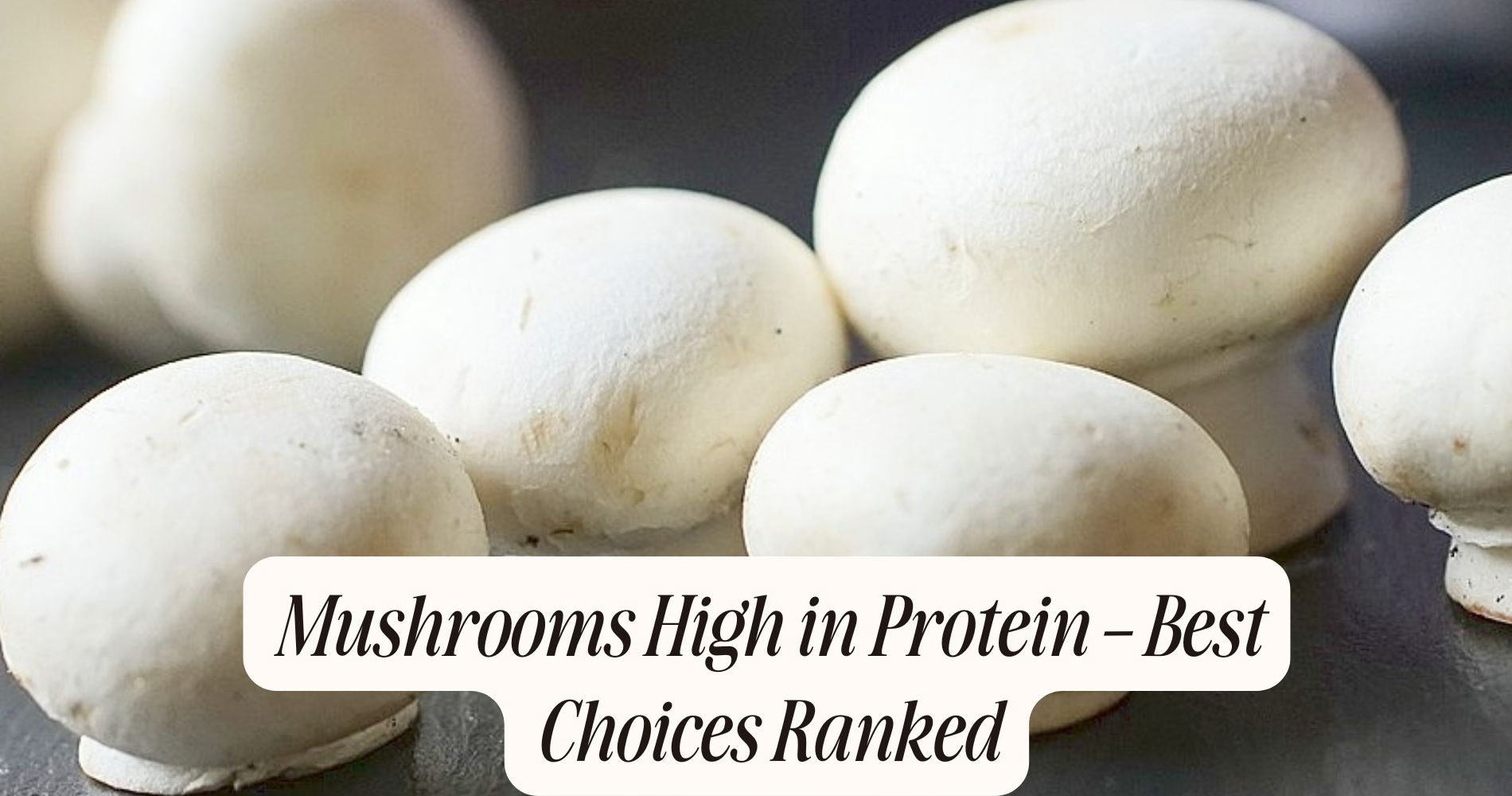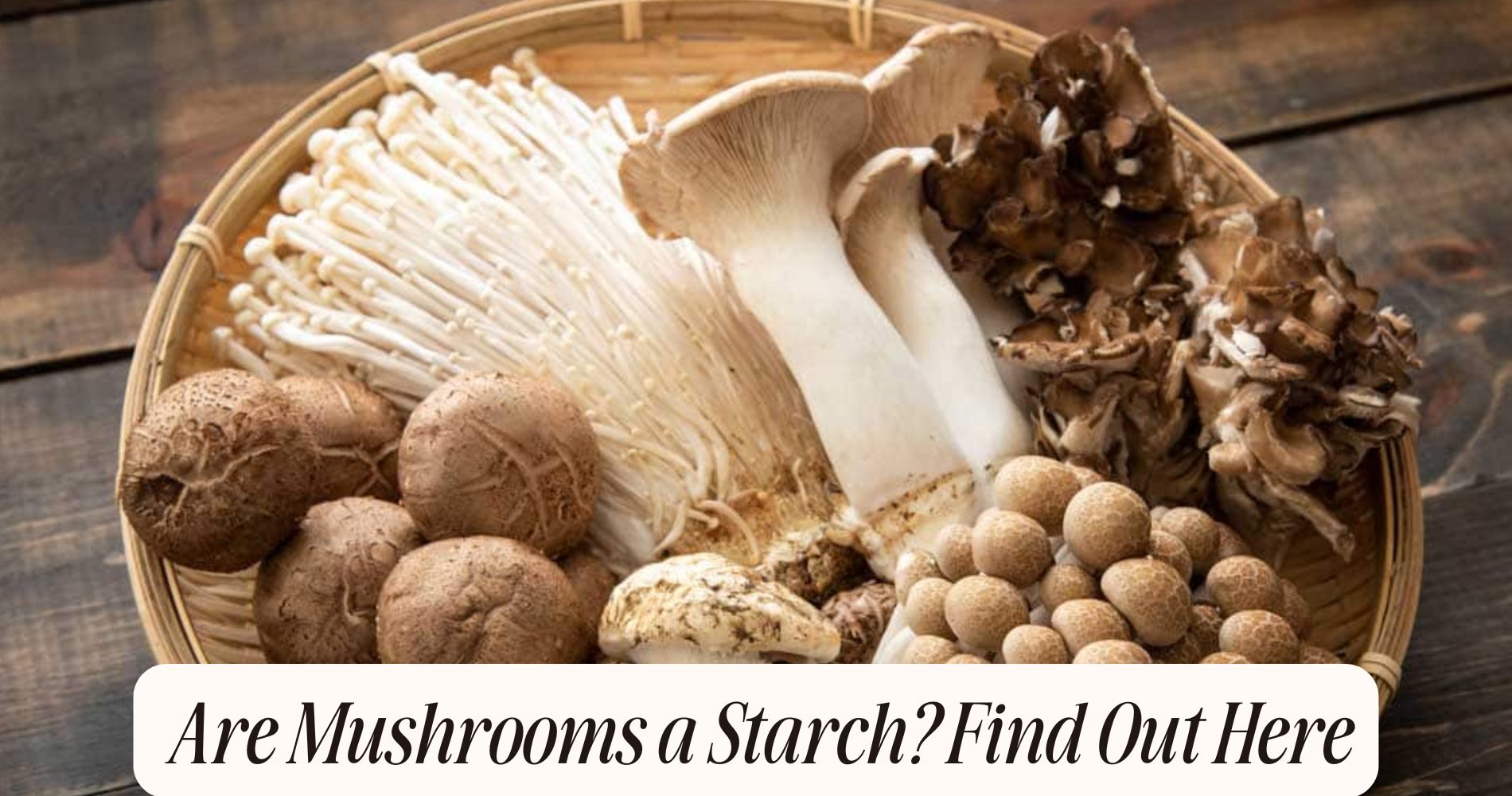
Mushrooms High in Protein – Best Choices Ranked
If you're searching for mushrooms high in protein, start with Pleurotus ostreatus (oyster mushrooms), which top the list with up to 3.3 grams of protein per 100 grams fresh. They're followed closely by Agaricus bisporus (button) and Lentinula edodes (shiitake), both offering strong amino acid profiles and reliable nutritional yields. These protein-rich mushrooms are excellent additions to plant-based diets, especially when properly stored and prepared to retain their benefits. Read on for practical tips and detailed nutritional insights to help you make the most of your mushroom-powered protein intake.
Why Protein Matters in a Plant-Based Diet
Although plant-based diets offer numerous health benefits, ensuring adequate protein intake remains essential for maintaining muscle mass, optimizing metabolic function, and supporting immune health.
As you shift toward plant-derived foods, you need to balance macronutrient distribution, since many botanical sources, while rich in fiber, diversity, and micronutrients, contain lower protein levels than animal products.
Protein provides essential amino acids necessary for cellular repair, enzymatic processes, and antibody synthesis. Without sufficient protein, you risk sarcopenia and impaired physiological function, even if you consume a diet abundant in phytochemicals and fiber.
Incorporating protein-dense fungi, such as species within the genera Pleurotus and Agaricus, enables you to achieve a broader spectrum of flavor profiles and textures, enhancing meal satisfaction while supporting dietary adequacy and overall metabolic homeostasis.
How Much Protein Is in Mushrooms?
While mushrooms are widely regarded for their culinary versatility, their protein content varies markedly among species. You’ll find that Agaricus bisporus (button mushrooms) typically contain about 3 grams of protein per 100 grams fresh weight, whereas species like Pleurotus ostreatus (oyster mushrooms) can reach up to 3.3 grams.

Protein yield is influenced not only by species selection but also by mushroom cultivation conditions—substrate composition, humidity, and harvest timing all play a role. Storage techniques further impact protein retention; improper storage may accelerate proteolytic enzyme activity, diminishing protein quality and quantity.
Fresh mushrooms generally retain more protein than dehydrated or canned forms, as processing can cause some losses. By understanding these scientific variables, you can more accurately assess the protein contribution mushrooms make to your diet.
Top Protein-Packed Mushroom Varieties
Given the diversity within the fungal kingdom, certain mushroom species consistently stand out for their elevated protein concentrations. When you explore mushroom cultivation, you'll notice that species such as Pleurotus ostreatus (Oyster), Lentinula edodes (Shiitake), and Agaricus bisporus (Button) are frequently highlighted in scientific literature for their superior protein yields per 100 grams of fresh weight.
Flammulina velutipes (Enoki) and Grifola frondosa (Maitake) also demonstrate notable protein densities, making them attractive for both commercial cultivation and home growers seeking nutritional benefits.

Each of these mushrooms exhibits distinct flavor profiles, ranging from the umami-rich character of Shiitake to the delicate, slightly sweet notes of Enoki. Their adaptability to various substrates and cultivation environments further enhances their appeal, ensuring that you can select species to match both taste and functional protein needs.
Ranking the Best Mushrooms for Protein Content
Evaluating which mushrooms deliver the highest protein content requires a direct comparison of their nutritional profiles as documented in peer-reviewed studies. You’ll find that Pleurotus ostreatus (oyster mushrooms) consistently ranks at the top, offering up to 3.3 grams of protein per 100 grams fresh weight.
Close contenders in mushroom cultivation include Agaricus bisporus (white button and cremini varieties) and Lentinula edodes (shiitake), both providing moderate protein concentrations. Auricularia auricula-judae (wood ear) and Flammulina velutipes (enoki) also contribute notable protein yields, though slightly lower.
When you select mushrooms for both protein and culinary applications, consider their unique mushroom flavor profiles, as these can enhance your dishes while delivering essential amino acids. Reliable data guarantees your choices are both scientific and flavorful.
Nutritional Benefits Beyond Protein
Although protein content often draws the spotlight, mushrooms such as Pleurotus ostreatus and Lentinula edodes also deliver a spectrum of micronutrients and bioactive compounds essential for ideal health.
You'll benefit from significant antioxidant properties, attributed to ergothioneine, glutathione, and phenolic compounds present in these fungi. These antioxidants help mitigate oxidative stress at a cellular level, supporting immune function and reducing inflammation.
Moreover, the fiber content in mushrooms, primarily in the form of beta-glucans and chitin, promotes gastrointestinal health and modulates glycemic response.
Both P. ostreatus and L. edodes supply B-vitamins, selenium, and copper, contributing to metabolic efficiency and enzymatic activity.
Cooking Tips to Maximize Protein Retention
When preparing high-protein mushrooms such as Pleurotus ostreatus and Lentinula edodes, selecting ideal cooking methods is crucial for preserving their amino acid content. To optimize nutrient preservation, prioritize cooking techniques like steaming or microwaving over boiling.

Scientific studies confirm that prolonged exposure to high temperatures and water can leach out soluble proteins and degrade thermolabile amino acids. You'll want to minimize both cooking duration and temperature to prevent unnecessary protein loss.
Sautéing with minimal oil at moderate heat is also effective, as it limits direct protein denaturation. Avoid deep-frying or pressure-cooking, since these methods accelerate protein breakdown and diminish nutritional value.
Easy High-Protein Mushroom Recipes
If you’re seeking practical ways to incorporate protein-rich mushrooms like Pleurotus ostreatus (oyster mushroom) and Lentinula edodes (shiitake) into your diet, evidence-based recipes offer both efficiency and nutritional benefits.
You can optimize amino acid intake by preparing sautéed oyster mushrooms with quinoa, leveraging their umami-rich flavor profile and firm texture. Shiitake, recognized for its robust, earthy notes, pairs well in stir-fries with legumes and whole grains, maximizing protein synergy.
Consider sourcing specimens from sustainable mushroom cultivation operations, as cultivation methods can influence both nutrient density and flavor profiles.
For a quick meal, grill Pleurotus caps and serve atop lentil salads, merging diverse protein sources.
Comparing Mushrooms to Other Plant-Based Proteins
While mushrooms such as Pleurotus ostreatus and Lentinula edodes offer notable protein content compared to other commonly consumed fungi, their amino acid profiles and overall protein yield typically fall short of those found in legumes, pulses, and soy-based products.
When you evaluate protein sources, you'll find that Phaseolus vulgaris (common beans) and Glycine max (soybeans) provide complete amino acid profiles and higher concentrations per serving.

However, mushroom cultivation delivers specific advantages, including unique mushroom flavor profiles, lower environmental impact, and rapid biomass production.
You won't get the same protein density from mushrooms as from lentils or chickpeas, but you gain culinary diversity and micronutrient benefits.
Integrating mushrooms with complementary plant proteins can enhance overall dietary quality without sacrificing taste or sustainability in your nutrition strategy.
Smart Shopping Tips for Protein-Rich Mushrooms
Understanding how mushrooms compare to other plant-based proteins helps you make informed decisions at the market, especially if you're looking to maximize your protein intake.
When selecting protein-rich species such as Pleurotus ostreatus (oyster mushrooms) or Lentinula edodes (shiitake), prioritize specimens with firm texture and uniform coloration, as these indicate peak freshness and higher nutritional value.
If you engage in mushroom foraging, consult regional identification guides to ensure safety and maximize protein yield.
For ideal preservation, follow evidence-based mushroom storage tips: refrigerate in paper bags to maintain low humidity and prevent degradation of protein content. Avoid plastic, which accelerates spoilage.
Evaluate harvest dates and source transparency for cultivated varieties.
Functional Fuel Without the Fuss: SUPER MUSHROOM GUMMIES
Exploring mushrooms high in protein to enhance your nutrition? Take your mushroom benefits further with Well Gummies' SUPER MUSHROOM GUMMIES! These convenient, vegan-friendly chewables combine 10 functional mushrooms known for supporting energy, focus, and immune health—without the need to cook or prep. While not a protein supplement, they offer powerful wellness support with a delicious wild berry flavor. No jitters, no crash—just calm, steady energy and mental clarity to keep you at your best. Fuel your body the smart, tasty way with Well Gummies!
Frequently Asked Questions
Can Mushrooms Cause Allergic Reactions in Some People?
You can experience a mushroom allergy, as certain individuals display hypersensitivity to fungal proteins. These allergic reactions range from mild urticaria to severe anaphylaxis. Evidence-based reports document immunoglobulin E-mediated responses following exposure to various Basidiomycota and Ascomycota species.
Are There Any Toxic Lookalike Mushrooms to Avoid?
You should watch for poisonous lookalikes like Amanita phalloides and Galerina marginata. Use identification tips such as spore print analysis, cap morphology, and gill attachment. Accurate identification, confirmed by mycological keys, prevents accidental toxic ingestion.
How Should Mushrooms Be Stored to Maintain Freshness?
For ideal mushroom storage, you should refrigerate specimens in a breathable paper bag to minimize excess moisture and microbial proliferation. These freshness tips help reduce enzymatic browning and maintain basidiocarp texture, extending edibility according to evidence-based mycological guidelines.
Do Dried Mushrooms Have More Protein Than Fresh Ones?
When you conduct a nutritional comparison, you'll find dried mushrooms contain more protein per gram than fresh, due to water loss. However, flavor differences arise since drying concentrates umami compounds, altering both culinary application and sensory profile.
Are Protein-Rich Mushrooms Safe for Children and Pregnant Women?
You can safely include protein-rich mushrooms like Agaricus bisporus and Lentinula edodes in a balanced diet for children and during pregnancy. Scientific evidence supports their safety, enhancing child safety and pregnancy nutrition when properly cooked and sourced.
Conclusion
When you prioritize protein on a plant-based diet, you’ll find mushrooms—especially Pleurotus ostreatus (oyster), Agaricus bisporus (white/button), and Lentinula edodes (shiitake)—offer respectable protein yields among fungi. While they don’t surpass legumes or soy, their amino acid profiles and micronutrients make them valuable dietary inclusions. Use culinary techniques like grilling or sautéing to retain protein integrity. So, integrate these high-protein mushroom taxa to diversify your nutrition and optimize your plant-based protein intake.




